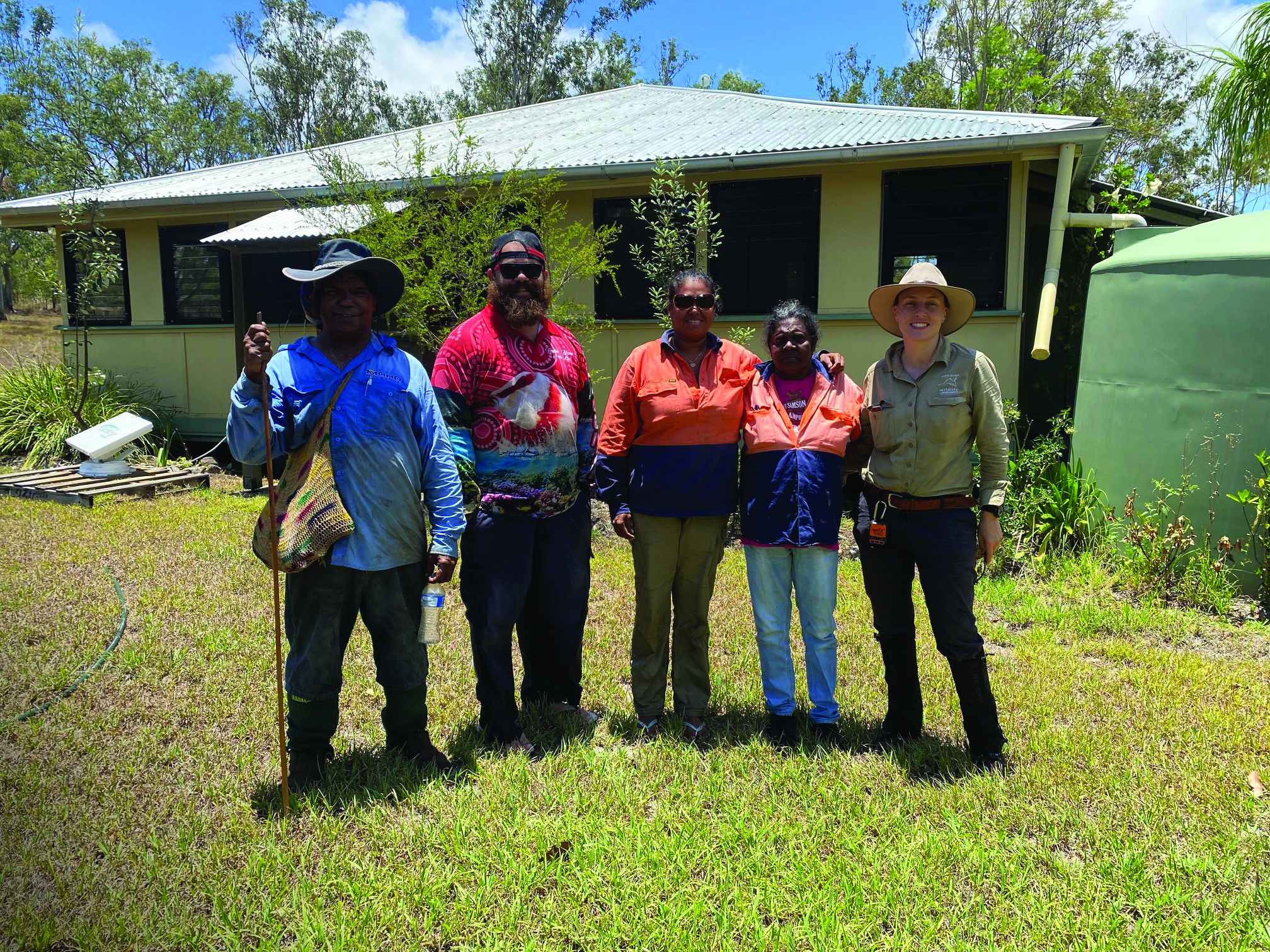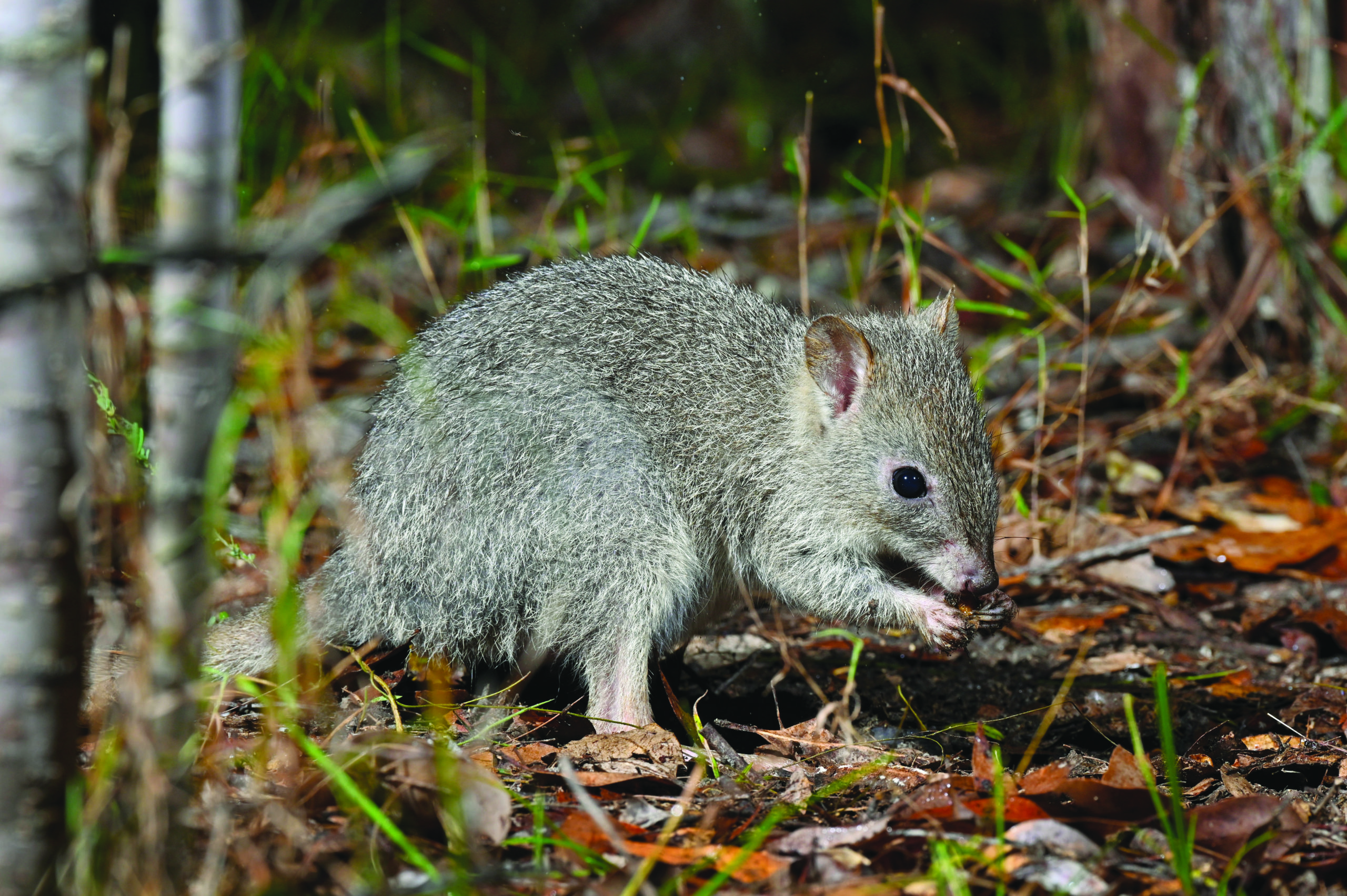By Felicity L’Hotellier, Senior Field Ecologist and Josh McAllister, Sanctuary Manager
Listed among the 20 Australian mammal species at greatest risk of extinction (Geyle et al. 2018), the future of the Northern Bettong (Bettongia tropica) hangs in the balance. With a range once extending from the Wet Tropics to central Queensland, predation by feral cats, wildfire and habitat loss has seen the species restricted to the tall, open eucalypt forests and woodlands adjacent to the rainforests of North Queensland. Only two unsecure populations remain – one, on the Lamb Range, estimated at fewer than 1,000 individuals, and a second smaller population on the Mount Carbine Tableland thought to support fewer than 100 individuals.
The establishment of a third, secure population at AWC’s Mount Zero-Taravale Wildlife Sanctuary, a landscape once home to the Northern Bettong, is a critical step in safeguarding the future of this species.
Throughout an unpredictable 2020, AWC continued to advance the Northern Bettong reintroduction plans. The alignment of the Mount Zero-Taravale feral predator-free exclosure was finalised, with the team walking, revising (and re-walking) the proposed lines. Gugu Badhun Traditional Owners, key partners in the reintroduction project, also completed a cultural heritage assessment of the proposed fence line to ensure the alignment would not adversely affect any culturally significant objects or sites.
 F L’Hotellier/AWC
F L’Hotellier/AWC
Creeks and drainage lines were paid particular attention throughout the planning process, with the monsoonal climate of North Queensland presenting unique design challenges. Along the length of the 13-kilometre fence line, 25 creek crossings will be required; 12 of these are significant. While normally just a trickle during the dry season, some of these creeks can become a torrent of water up to 2 metres deep in the wet season. Engineers were engaged to advise on these crossings, and surveyors will undertake further assessment of two major crossings when the current wet season recedes.
Fencing materials have been acquired, with feral eradication and earthworks due to start in coming months. Fence construction will commence shortly after, with eradication and intensive monitoring continuing until there is no evidence of feral predators detected for a consecutive 3-month period. At this point the area will be declared feral predator-free, which will allow us to proceed with the ultimate step: returning Northern Bettongs to Mount Zero-Taravale.
AWC has been working closely with the Northern Bettong Recovery Team, Traditional Owners and key stakeholders to finalise translocation plans and monitor the two remaining Northern Bettong populations. The Department of Environment and Science and other regulatory bodies have also been widely consulted to progress the approval of on-ground plans.
During 2020, AWC ecologists undertook cage- and camera-trapping efforts across three key subpopulations in the Lamb Range. These populations have been variably monitored for more than two decades. Founding individuals for the Mount Zero-Taravale population will be sourced from across these populations; monitoring both prior to and following the removal of founders is an important component of our reintroduction plans.
All going to plan, AWC is scheduled to translocate Northern Bettongs back to Mount Zero-Taravale following next wet season.
 W Lawler/AWC
W Lawler/AWC
AWC, in partnership with the Western Yalanji Aboriginal Corporation and Queensland Parks and Wildlife Service (QPWS), has also been conducting research on the Northern Bettong population on the Mount Carbine Tableland over the last four years. This work is currently funded through the Queensland Department of Environment and Science Community Sustainability Action grant scheme. A key objective of the research is to develop non-invasive methods to monitor this small and isolated population, as well as monitor feral cats and the impacts of cattle mitigation efforts.
This year the team are repeating the monitoring effort undertaken in 2020, including cage- and camera-trapping surveys, and fitting a subset of captured individuals with GPS-tracking radio collars. Filling knowledge gaps surrounding this population is critical for its ongoing persistence and will be central to the development of a population management plan currently being drafted by QPWS.
Geyle, H.M., Woinarski, J.C.Z., Barry Baker, G., Dickman, C.R., Dutson, G., Fisher, D.O., Ford, H., Holdsworth, M., Jones, M.E., Kutt, A., Legge, S., Leiper, I., Loyn, R., Murphy, B.P., Menkhorst, P., Reside, A.E., Ritchie, E.G., Roberts, F.E., Tingley, R. and Garnett, S.T. 2018. Quantifying extinction risk and forecasting the number of impending Australian bird and mammal extinctions. Pacific Conservation Biology 24 (2): 157-167.
Read and download this full issue of Wildlife Matters here.
Donate to help protect the Northern Bettong from extinction